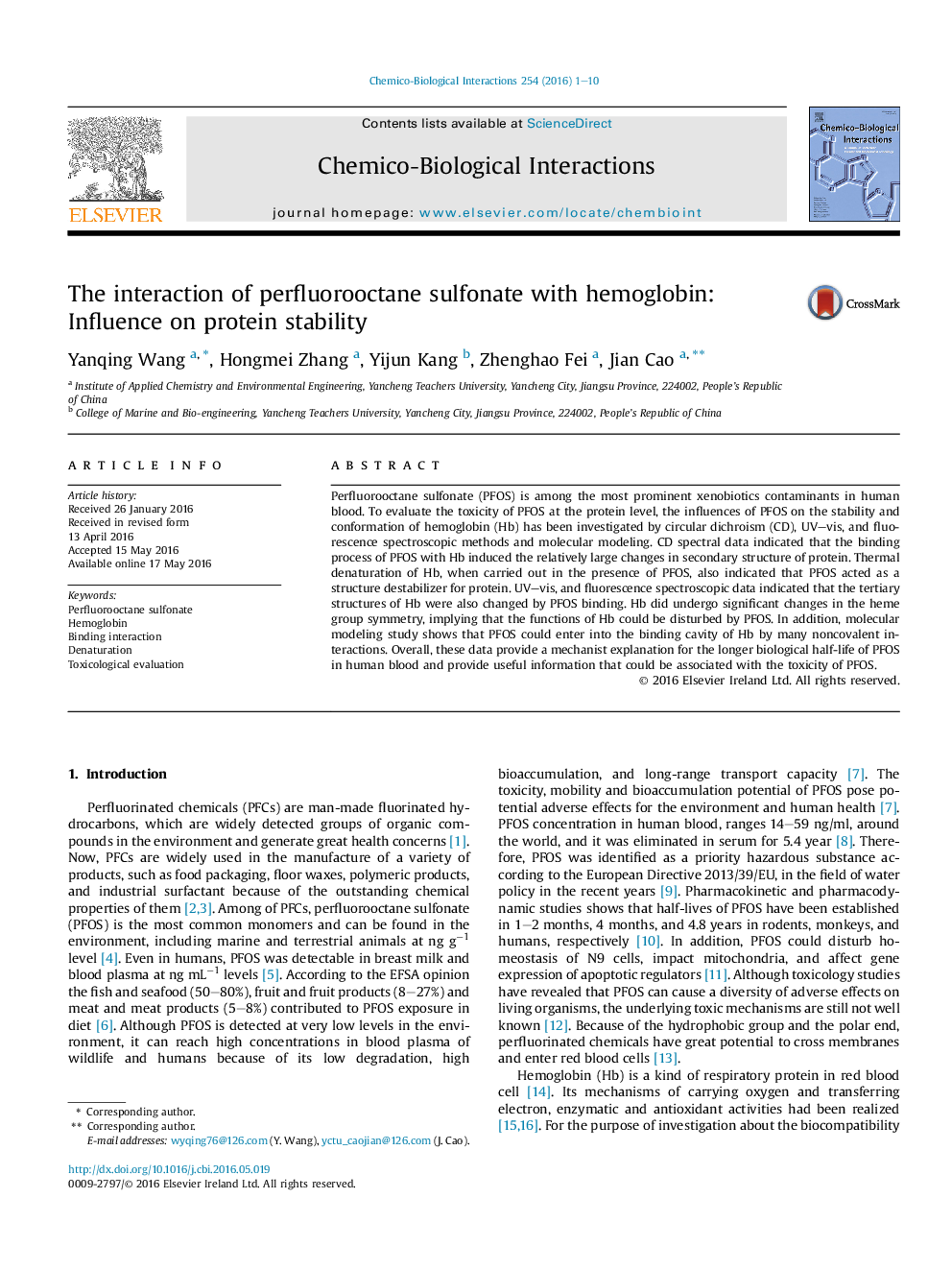| Article ID | Journal | Published Year | Pages | File Type |
|---|---|---|---|---|
| 2579833 | Chemico-Biological Interactions | 2016 | 10 Pages |
•Binding interaction of PFOS with BHb was investigated.•PFOS exhibits influence on the conformation of BHb.•PFOS decreases the protein stability of BHb during the thermal denaturation of protein.•Hb does undergo significant changes in the heme group symmetry by PFOS.•Multiple non-covalent binding forces are involved in the binding process.
Perfluorooctane sulfonate (PFOS) is among the most prominent xenobiotics contaminants in human blood. To evaluate the toxicity of PFOS at the protein level, the influences of PFOS on the stability and conformation of hemoglobin (Hb) has been investigated by circular dichroism (CD), UV–vis, and fluorescence spectroscopic methods and molecular modeling. CD spectral data indicated that the binding process of PFOS with Hb induced the relatively large changes in secondary structure of protein. Thermal denaturation of Hb, when carried out in the presence of PFOS, also indicated that PFOS acted as a structure destabilizer for protein. UV–vis, and fluorescence spectroscopic data indicated that the tertiary structures of Hb were also changed by PFOS binding. Hb did undergo significant changes in the heme group symmetry, implying that the functions of Hb could be disturbed by PFOS. In addition, molecular modeling study shows that PFOS could enter into the binding cavity of Hb by many noncovalent interactions. Overall, these data provide a mechanist explanation for the longer biological half-life of PFOS in human blood and provide useful information that could be associated with the toxicity of PFOS.
Graphical abstractFigure optionsDownload full-size imageDownload as PowerPoint slide
